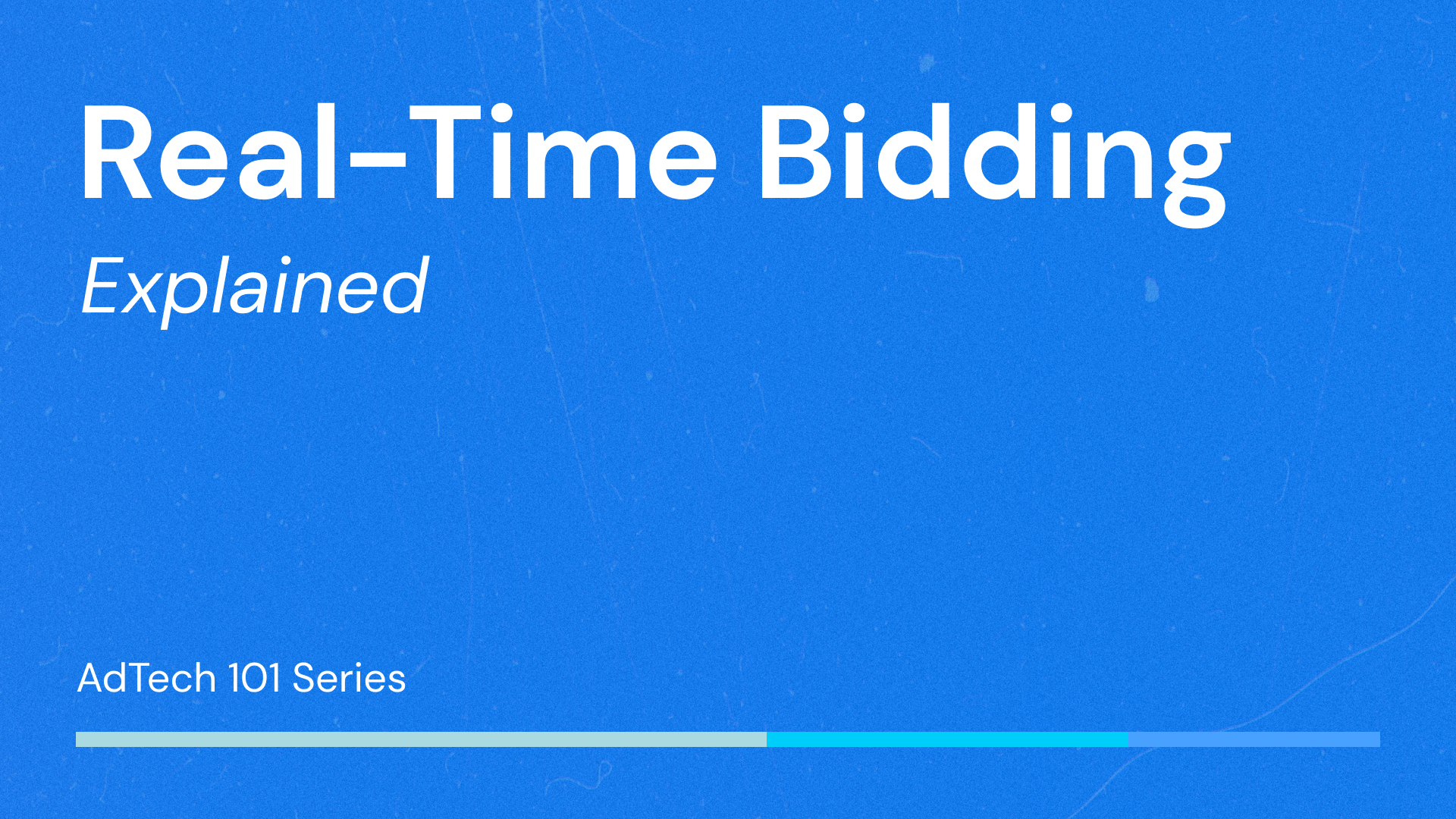Table of Contents
Real-time Bidding’s Definition
Standing for Real-Time bidding, RTB is the process of automated buying and selling of online ad inventory based on real-time auctions. It involves a set of protocols and standards.
Such auctions occur when the user visits publishers’ websites/pages or launches an app with an open ad space, triggering a real-time auction for the advertisers to make their bids for a determined ad inventory.
RTB automates the process, considering various factors such as users’ demographics, preferences, and the content on the website or app itself. Therefore, it ensures communication and collaboration between the publishers (sellers), advertisers (buyers), and middlemen during the auction.
How Does the RTB Work?
RTB ads work through a series of processes that happen during real-time auctions.
Here is a simple step-by-step explanation:
- A site sends out an ad request to an SSP when there is a potential viewer of the material.
- The SSP gathers visitor data encompassing personal preferences, demographics, and location, along with details about the available ad space, before forwarding it to an ad exchange.
- The ad exchange transfers the information about this ad opportunity to multiple DSPs.
- Based on the targeting set by advertisers, their DSPs bid on the potential impression.
- The ad exchange receives ad responses and determines the highest bid that wins the auction.
- Lastly, the site visitor views the advertising of the second highest bidder.
Can Programmatic Exist Without the RTB?
The simple answer is yes, it can. Though the essentiality of RTB in programmatic is difficult to overestimate, there are other ways to monetize your digital ad inventory, such as programmatic direct, including programmatic guaranteed and automated guaranteed.
Nevertheless, RTB offers a variety of benefits for all participants of the process. These include high efficiency and flexibility, cost-effectiveness, and ad targeting.
Consequently, over the decade, it has gained significant prominence all over the world due to its simplicity and generalized processes.
Participants of RTB Advertising
The process involves various sides, with the final target being the audience (users).
Publishers: usually websites/pages or apps, providing spaces for distribution of the ad content.
Supply-Side Platform (SSP) is used for the publishers to sell and optimize their digital ad inventory. Working with DSP enables the publishers to have a streamlined connection with the advertisers.
Demand-side Platform (DSP) collaborates with advertisers to manage and sell their ad inventory.
Advertisers: companies or agencies tending to promote their products/services, seeking acquirement of traffic to show the ad material.
Types of RTB Platforms
Besides already mentioned DSPs and SSPs, a major role in RTB is also played by Ad exchanges and Ad networks.
Ad exchanges are marketplaces where ad inventory is bought and sold during real-time auctions. They do not work directly with the sellers or buyers side, instead, they interact with SSPs and DSPs.
Ad networks, on the other hand, aggregate all of the ad inventory from multiple publishers and deliver it directly to the advertisers via DSP or directly. They often use the RTB technology to maximize the revenue for publishers.
Benefits of the RTB
- Enhanced user experience – by delivering relevant and organized content to the viewer, RTB can enhance the overall user experience on the platform. The users are more likely to see ads tailored to their preferences and interests.
- Convenience – RTB offers a variety of integrations suitable for different platforms to ensure stable cooperation between the publishers and the advertisers.
- Efficiency – due to the automated processes of buying and selling ad inventory, RTB reduces unnecessary manual negotiations during real-time auctions, simplifying procedures for all platforms involved.
FaQ
Which is the most common auction of real-time bidding?
The most common auction type in real-time bidding is considered to be the second-price auction. In a second-price auction, advertisers submit bids for ad placements in real-time, and the highest bidder wins the opportunity to display their ad. However, the winning bidder only pays the price of the second-highest bid, not their bid.
What is the difference between header bidding and real-time bidding?
Header bidding and real-time bidding (RTB) are both techniques used in online advertising, but they operate differently and serve distinct purposes. Publishers use header bidding to provide ad inventory for multiple advertisers. In contrast, real-time bidding is buying and selling ad inventory through a real-time auction-based system.
Is RTB the same as programmatic?
Programmatic advertising is the generalized term that accumulates different automated techniques for buying and selling ad inventory. RTB, however, is a type of programmatic advertising, specifically focusing on real-time auctions.
When was RTB created?
RTB was first invented in 2009. Before, advertisers were buying ad inventory directly from the publishers, and websites of which their targeted audience visited.
RTB and oRTB: the same thing?
RTB is the method of buying and selling ad inventory through the real-time auction. Open RTB, on the other hand, is a special protocol used to simplify those auctions.
This Article's Ad Tech terms

